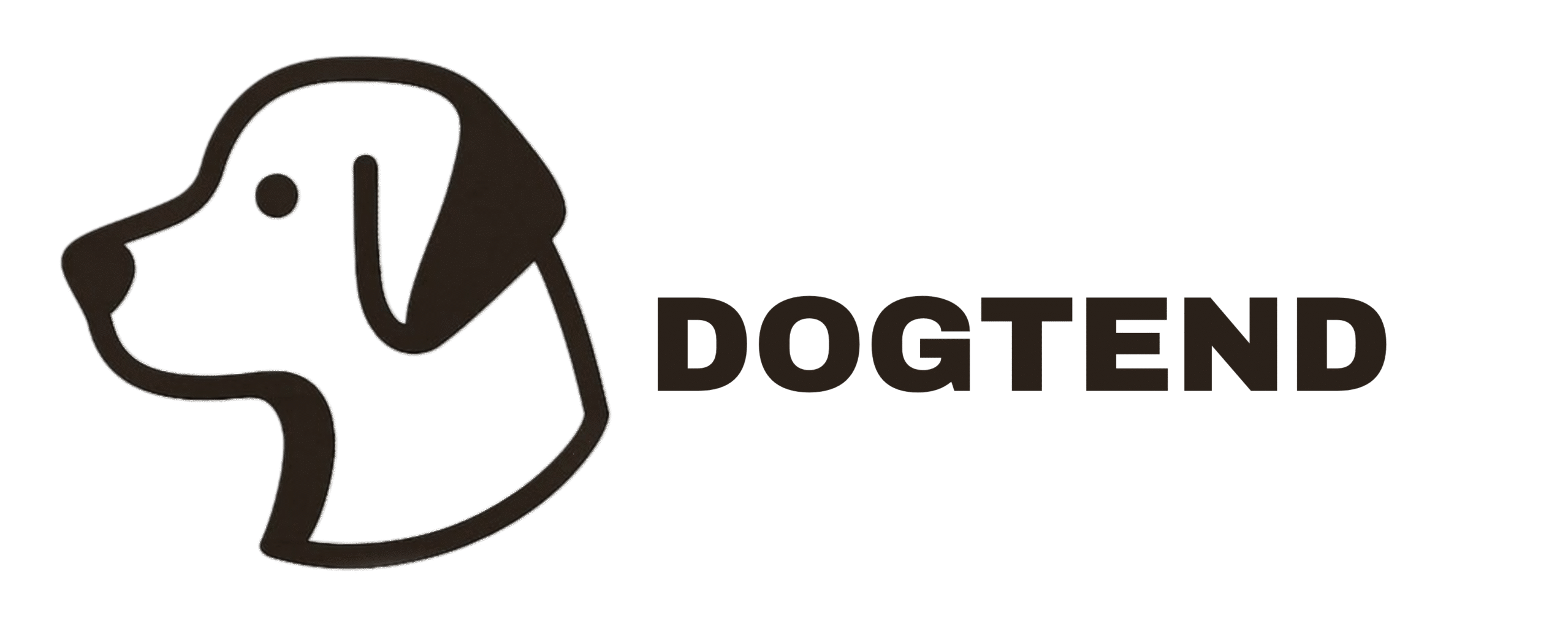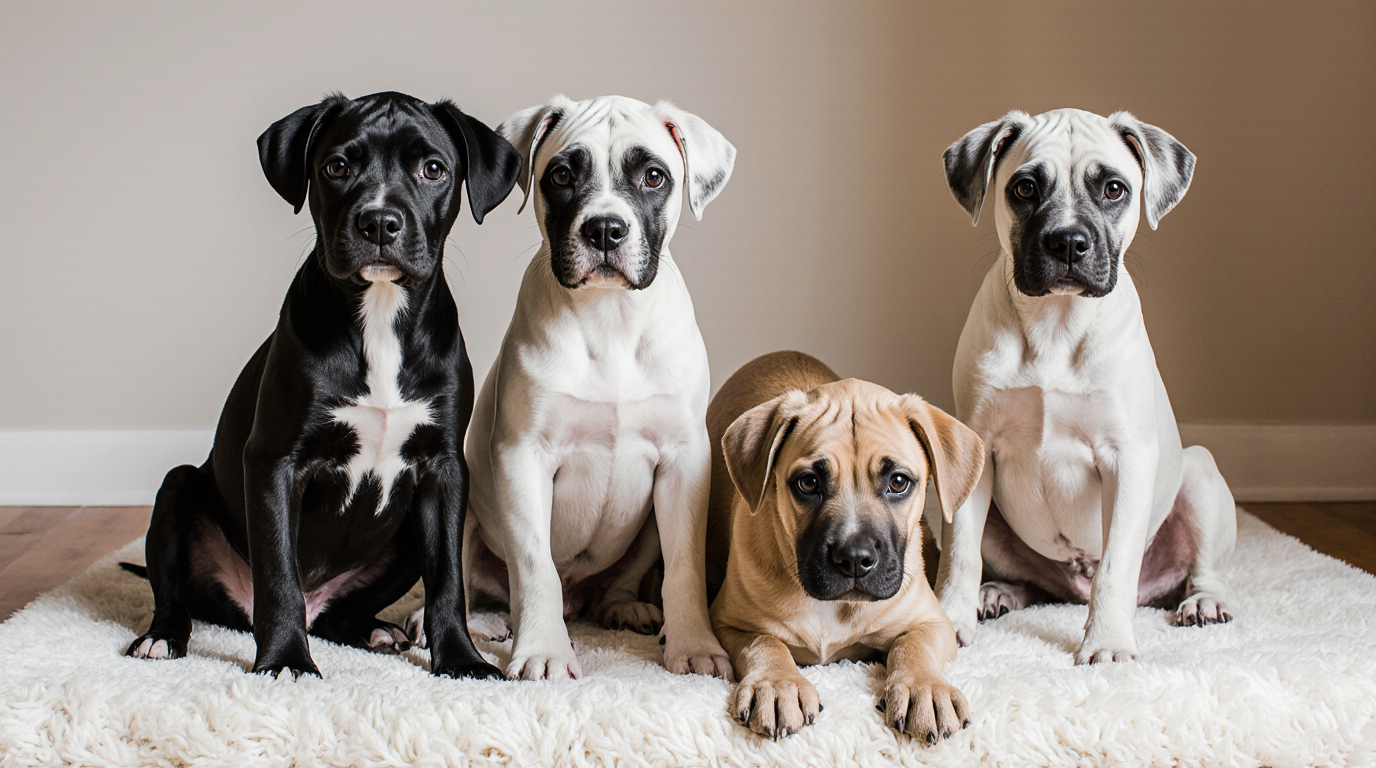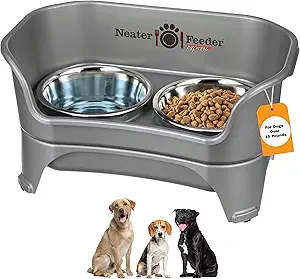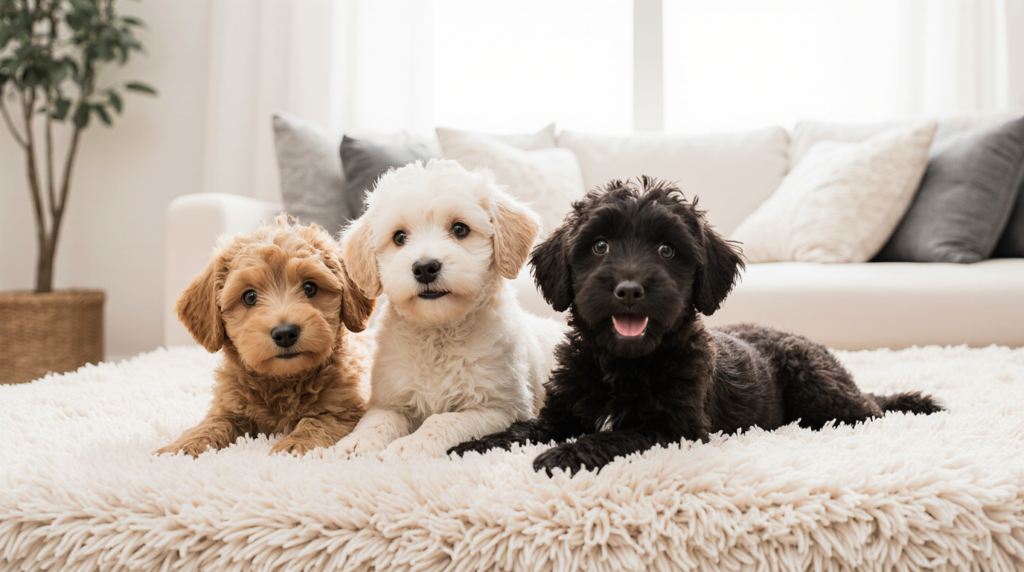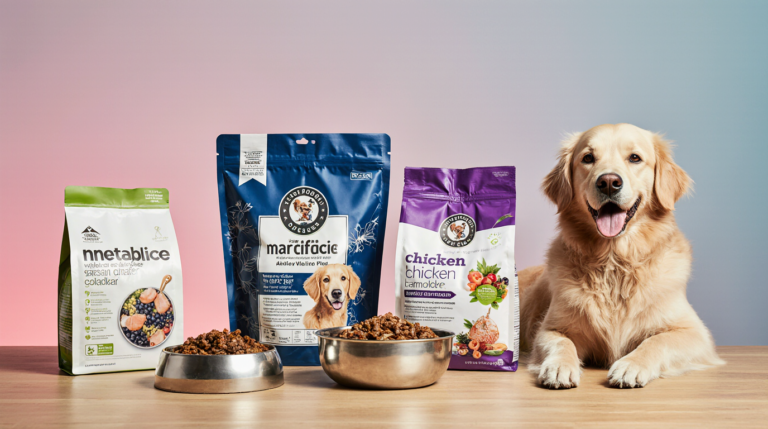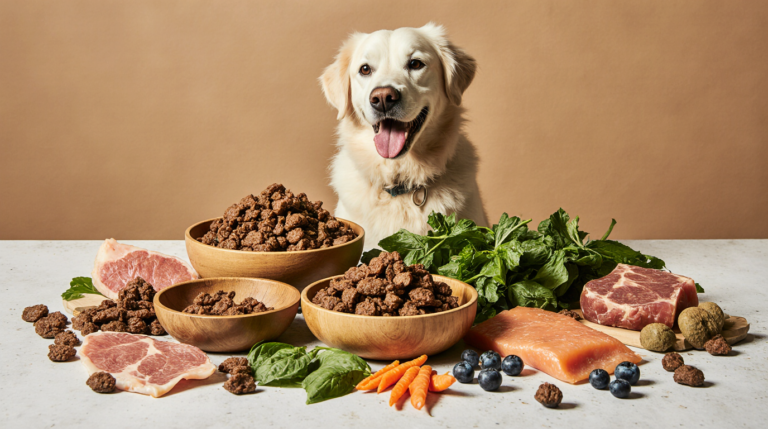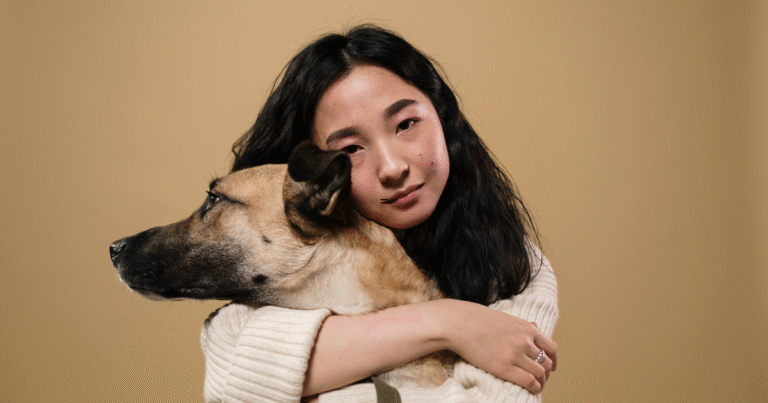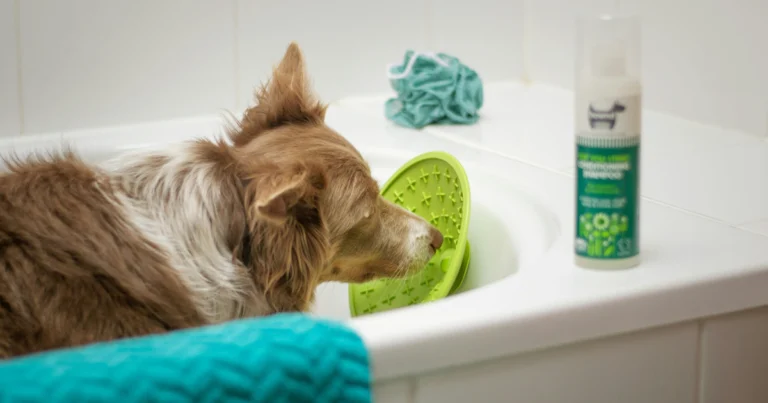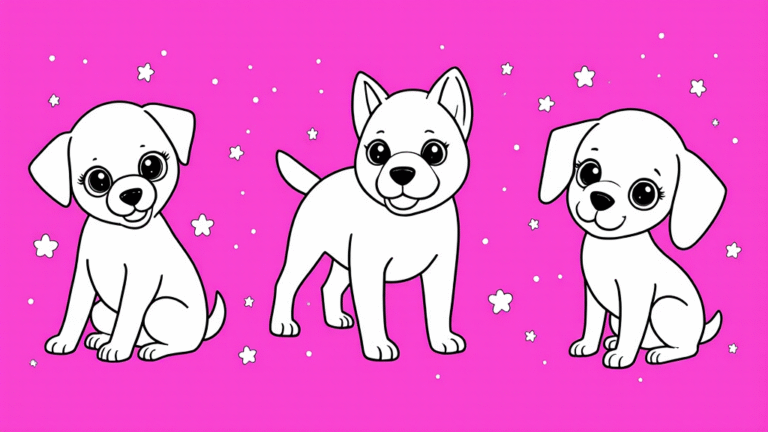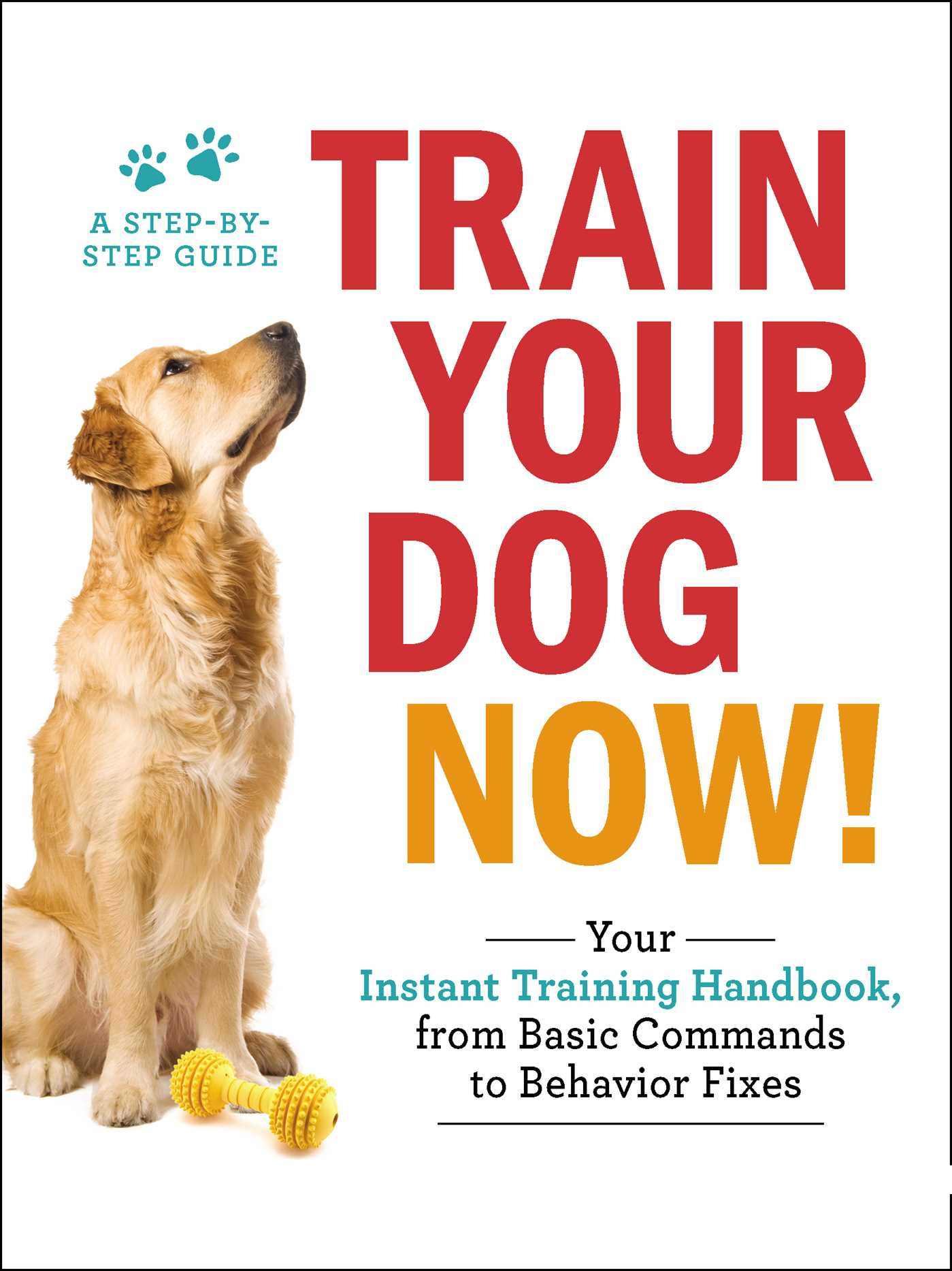great dane puppies
The Complete Guide to Great Dane Puppies: From Selection to Adolescence
When you think of great dane puppies, the first image that comes to mind is likely their adorable oversized paws and endearing expressions. But choosing to bring one of these gentle giants into your family requires much more consideration than their undeniable charm. Great dane puppies grow into dogs that can weigh as much as their human parents, making proper care, training, and preparation absolutely essential from day one.
Why Choose a Great Dane Puppy? Beyond the Looks
While their impressive stature and noble appearance often draw people in, great dane puppies offer so much more than just good looks. These gentle giants are renowned for their calm, affectionate temperament and their surprising adaptability to family life.
Temperament That Defies Their Size
Despite their imposing adult size, Great Danes are often called “gentle giants” for good reason. They tend to be:
- Calm and patient with children
- Loyal and protective without being aggressive
- Social and friendly with proper socialization
- Surprisingly adaptable to apartment living when given adequate exercise
Lifestyle Considerations
Before committing to great dane puppy care, honestly assess your lifestyle. These dogs require:
- Adequate space to stretch out and move comfortably
- Higher food and medical costs due to their size
- Early and consistent training due to their eventual strength
- Understanding of their exercise needs during growth phases
Finding Your Great Dane Puppy
Reputable Breeder Checklist
Finding a responsible breeder is crucial for great dane puppy training success and long-term health. Here’s a comprehensive checklist that goes beyond basic requirements:
Health Testing Documentation
- [ ] Hip and elbow dysplasia clearances (OFA or PennHIP)
- [ ] Cardiac clearance from a board-certified cardiologist
- [ ] Eye clearances (CERF)
- [ ] Thyroid testing results
- [ ] DNA tests for breed-specific conditions
Breeding Program Standards
- [ ] Breeding dogs are at least 2 years old
- [ ] No more than one litter per dam per year
- [ ] Written health guarantees covering genetic conditions
- [ ] Lifetime return policy if you can’t keep the puppy
- [ ] Active participation in breed clubs or dog sports
Environment and Care
- [ ] Clean, spacious facilities for dogs and puppies
- [ ] Puppies raised in home environment, not kennels
- [ ] Early neurological stimulation protocols
- [ ] Age-appropriate socialization program
- [ ] Proper veterinary care documentation
Rescue vs. Breeder: Pros and Cons for Danes
| Rescue Adoption | Reputable Breeder |
|---|---|
| Pros: Lower cost, saving a life, adult temperament known | Pros: Known health history, early socialization, breed-specific support |
| Cons: Unknown health history, possible behavioral issues, limited puppy availability | Cons: Higher cost, waiting lists, need to research breeders thoroughly |
| Best for: Experienced owners, flexible on age/appearance | Best for: First-time Dane owners, specific requirements |
What to Ask a Breeder: 20+ Essential Questions
Health and Genetics
- Can I see health clearances for both parents?
- What is the average lifespan of dogs in your lines?
- Have any dogs in the pedigree had bloat, cardiomyopathy, or wobbler syndrome?
- What health guarantee do you provide?
- Do you have a relationship with a veterinary cardiologist?
Breeding Practices 6. How long have you been breeding Great Danes? 7. How many litters do you produce per year? 8. At what age do you breed your females? 9. How do you select breeding pairs? 10. Are you involved in conformation showing or performance events?
Puppy Care 11. How do you socialize your puppies? 12. What vaccinations will the puppy have received? 13. When will the puppy be ready to go home? 14. What feeding program do you recommend? 15. Do you provide ongoing support after placement?
References and Transparency 16. Can you provide references from previous puppy buyers? 17. May I speak with your veterinarian? 18. Can I visit to meet the mother and see the facilities? 19. What happens if I can no longer keep the dog? 20. Are you available for questions throughout the dog’s life?
Additional Considerations 21. How do you match puppies to families? 22. What is your spay/neuter policy? 23. Do you show or compete with your dogs? 24. What do you feed your dogs? 25. How do you handle puppy deposits and contracts?
Red Flags to Avoid
Watch out for these warning signs when searching for great dane puppies:
- Multiple breeds for sale simultaneously
- Always having puppies available
- No health testing documentation
- Unwillingness to let you visit
- Pressure to buy immediately
- Extremely low or high prices compared to local averages
- Poor living conditions for dogs
- Puppies available before 8 weeks of age
- No health guarantee or return policy
- Breeder can’t answer basic questions about the breed
The First Visit: Observing the Litter Dynamics
When you visit a litter of great dane puppies, pay attention to more than just individual puppies. Observing the entire litter provides valuable insights:
Healthy Litter Signs:
- Puppies are actively playing and exploring
- Clean environment with fresh water available
- Mother dog is calm and comfortable with visitors
- Puppies approach visitors with curiosity, not fear
- No signs of illness (runny noses, lethargy, poor coats)
Individual Puppy Assessment:
- The Confident Explorer: Often makes a great family pet
- The Gentle Observer: May be perfect for quieter households
- The Attention Seeker: Needs experienced handling and training
- The Shy Wallflower: Requires patient, consistent socialization
Remember, avoid the most dominant or most submissive puppies unless you’re experienced with these temperament types.
Bringing Your Great Dane Puppy Home (Weeks 8-12)
Puppy-Proofing for a Giant
Great Dane puppies need three or four small meals every day, but they also need a safe environment that accounts for their rapid growth. Puppy-proofing for a giant breed requires special considerations:
Height-Specific Hazards:
- Secure countertops and tables (they’ll reach them sooner than expected)
- Remove or secure items 4-6 feet high
- Install cabinet locks higher than typical
- Protect tall furniture from being knocked over
- Ensure fencing is at least 6 feet high
Size-Appropriate Barriers:
- Use extra-tall baby gates
- Secure loose rugs that could cause slipping
- Remove small objects that pose choking hazards
- Protect electrical cords and outlets
- Create safe spaces with appropriate headroom
Essential Supplies Checklist
Great dane puppy care requires specialized, durable equipment:
Feeding Supplies:
- [ ] Large-breed puppy food (22-25% protein, 8-12% fat)
- [ ] Heavy, non-slip food bowls (avoid elevated feeders)
- [ ] Large water bowl or automatic waterer
Safety and Comfort:
- [ ] Extra-large crate (48″ minimum, plan for 54″ adult size)
- [ ] Heavy-duty leash and collar
- [ ] Durable chew toys sized for large breeds
- [ ] Orthopedic dog bed
- [ ] Tall exercise pen
Training Equipment:
- [ ] High-value training treats
- [ ] Clicker for positive reinforcement
- [ ] Long training lead (20-30 feet)
- [ ] Puzzle toys for mental stimulation
First Vet Visit: Giant Breed Specifics
For Great Dane puppies, look for a large breed puppy formula with 22-25% protein and 8-12% fat, but your veterinarian needs to discuss much more than just nutrition:
Essential Discussion Points:
- Growth monitoring and weight management
- Vaccination schedule for large breeds
- Spay/neuter timing considerations
- Exercise restrictions during growth phases
- Signs of developmental orthopedic diseases
- Bloat prevention strategies
- Parasite prevention appropriate for size
The Critical First 72 Hours: Settling In a Giant Breed Puppy
The first three days home are crucial for great dane puppies. Their size makes some typical puppy behaviors more challenging:
Hour 1-6: Immediate Priorities
- Allow supervised exploration of designated areas
- Offer water immediately
- Wait 2-3 hours before offering food
- Establish potty schedule every 2-3 hours
- Begin crate introduction with positive associations
Day 1: Establishing Routine
- Feed on breeder’s schedule initially
- Take outside frequently (every 2-3 hours)
- Limit visitors and overwhelming stimuli
- Begin name recognition training
- Ensure quiet rest periods
Days 2-3: Building Confidence
- Maintain consistent routine
- Gradually increase exploration areas
- Introduce family members slowly
- Start basic handling exercises
- Begin simple training sessions (5-10 minutes)
Early Training & Socialization (Weeks 8-16)
Potty Training for Large Bladders
Great dane puppy training presents unique challenges due to their size and rapid growth. Their larger bladders mean:
Frequency Adjustments:
- Young puppies: every 2-3 hours
- 4-5 months: every 4-5 hours
- 6+ months: every 6-8 hours
Size Considerations:
- Use larger designated potty areas
- Ensure easy access to outside doors
- Consider their adult size when establishing routes
- Use consistent verbal cues from the start
Crate Training: Size & Strategy
Great Danes respond best to positive reward based training methods such as clicker training, especially for crate training:
Crate Selection:
- Start with appropriate puppy size (48″)
- Plan for adult size (54″ minimum)
- Choose heavy-duty construction
- Ensure proper ventilation
- Include comfortable bedding
Training Strategy:
- Make crate the “best place” with high-value treats
- Feed meals inside crate initially
- Gradually increase duration
- Never use crate for punishment
- Maintain positive associations throughout growth
Basic Obedience: Giant Breed Modifications
Standard puppy training requires modifications for great dane puppies:
Sit Command:
- Use higher treat placement to encourage natural sitting
- Account for their size when positioning
- Reward immediately for proper position
- Practice on non-slip surfaces
Stay Command:
- Start with very short durations
- Use clear hand signals due to their height
- Practice in various locations
- Gradually increase distance and duration
Recall Training:
- Always use positive reinforcement
- Practice in secure, enclosed areas
- Use high-value rewards
- Never call for negative experiences
- Consider their adult strength in training decisions
The Great Dane Puppy Socialization Window: An Intensive Guide
Expose your puppy to a variety of textures; wood chips, sand, blankets, tile, gravel, grass, cement and bridges during the critical 8-16 week period.
Week 8-10: Foundation Building
- Household sounds and activities
- Gentle handling of paws, ears, mouth
- Different surface textures
- Car rides to positive destinations
- Meeting calm, well-socialized dogs
Week 10-12: Expanding Horizons
- Supervised meetings with children
- Various environmental sounds
- Different types of people (uniforms, hats, etc.)
- Exposure to other animals (cats, small dogs)
- Public places (pet-friendly stores, parks)
Week 12-16: Advanced Socialization
- Busy environments with supervision
- Group puppy classes
- Various weather conditions
- Different terrains and elevations
- Positive vet and groomer experiences
Fear Period Management (8-11 weeks): During fear periods, maintain positive experiences without forcing interactions. If your puppy shows fear:
- Don’t comfort excessively (can reinforce fear)
- Maintain calm, confident energy
- Use treats and play to create positive associations
- Avoid overwhelming situations
- Consult a professional if fears persist
Nutrition for Growth (Birth to 1 Year)
Understanding Large Breed Puppy Food
Most knowledgeable Dane owners will agree, feeding Great Danes a premium dog food with protein levels no greater than 24% and fat levels between 12% to 14% is the key to proper development.
Critical Nutritional Requirements:
| Nutrient | Recommended Level | Why It Matters |
|---|---|---|
| Protein | 22-24% | Supports growth without excess |
| Fat | 8-12% | Energy without rapid growth |
| Calcium | 1.0-1.8% | Proper bone development |
| Phosphorus | 0.8-1.6% | Balanced with calcium |
| Omega-3 FA | 0.3% minimum | Joint and brain development |
Ingredients to Look For:
- Named animal protein as first ingredient
- Whole grains or quality carbohydrates
- Glucosamine and chondroitin
- DHA for brain development
- No artificial preservatives or colors
Ingredients to Avoid:
- Excessive protein (over 26%)
- High fat content (over 15%)
- Calcium supplements
- Generic meat meals
- Artificial growth enhancers
Feeding Schedules & Portions
The protein content in puppy food for your Great Dane should be between 23% and 24%, but portion control is equally critical:
Age-Based Feeding Schedule:
| Age | Meals Per Day | Daily Amount | Per Meal |
|---|---|---|---|
| 8-12 weeks | 4 meals | 3-4 cups | 3/4-1 cup |
| 3-4 months | 3 meals | 4-5 cups | 1.3-1.7 cups |
| 5-6 months | 3 meals | 5-7 cups | 1.7-2.3 cups |
| 7-12 months | 2 meals | 6-10 cups | 3-5 cups |
Feeding Best Practices:
- Measure portions accurately
- Feed at consistent times
- Use slow-feeder bowls to prevent gulping
- Avoid elevated feeders (increases bloat risk)
- Allow 1-2 hours between meals and exercise
Preventing Pano & HOD: Diet’s Role
Panosteitis (Pano) and Hypertrophic Osteodystrophy (HOD) are growth-related conditions affecting great dane puppies:
Panosteitis Prevention:
- Maintain moderate protein levels (22-24%)
- Avoid over-supplementing calcium
- Control growth rate through proper nutrition
- Monitor for lameness and pain
- Provide anti-inflammatory support when needed
HOD Prevention:
- Balanced calcium-to-phosphorus ratios
- Avoid vitamin C over-supplementation
- Feed large-breed specific formulas
- Monitor for swelling around growth plates
- Work closely with veterinarian during growth phases
The Dangers of Overfeeding: A Giant Breed Specific Warning
Overfeeding great dane puppies creates serious long-term consequences:
Skeletal Development Issues:
- Rapid growth stresses developing bones
- Increased risk of developmental orthopedic disease
- Growth plate abnormalities
- Higher likelihood of hip and elbow dysplasia
- Premature closure of growth plates
Warning Signs of Overfeeding:
- Rapid weight gain (more than 2-4 lbs per week after 16 weeks)
- Difficulty standing or playing
- Reluctance to exercise
- Heavy breathing during normal activity
- Visible rib coverage but easy to feel
Long-term Consequences:
- Shortened lifespan
- Increased arthritis risk
- Higher surgical costs
- Reduced quality of life
- Greater predisposition to bloat
Health & Wellness: A Giant Breed Concern
Common Great Dane Puppy Ailments
Panosteitis (Pano):
- Affects long bones in legs
- Causes shifting lameness
- Most common 6-18 months
- Managed with rest and pain control
- Usually self-limiting condition
Hypertrophic Osteodystrophy (HOD):
- Affects growth plates
- Causes severe pain and swelling
- Requires immediate veterinary care
- More serious than panosteitis
- May affect multiple limbs
Wobbler Syndrome:
- Affects cervical spine
- Causes wobbly gait
- Progressive condition
- Early detection crucial
- May require surgical intervention
Bloat Prevention in Puppies: While less common in puppies, establishing prevention habits early is crucial:
- Feeding multiple smaller meals rather than one large meal helps reduce the risk of bloat
- Break up their daily feedings into several meals, and use a food bowl designed to slow their rate of eating
- Avoid vigorous exercise before and after meals
- Monitor for early warning signs
Vaccination Schedule & Parasite Control
Great dane puppies require modified vaccination protocols:
Standard Vaccination Timeline:
- 6-8 weeks: DHPP, Bordetella
- 10-12 weeks: DHPP, Leptospirosis, Bordetella
- 14-16 weeks: DHPP, Leptospirosis, Rabies
- Annual boosters as recommended
Parasite Prevention:
- Monthly heartworm prevention
- Flea and tick control appropriate for size
- Regular deworming protocol
- Fecal examinations every 6 months
- Size-appropriate dosing crucial
Early Spay/Neuter Considerations for Danes
Timing spay/neuter surgery for great dane puppies requires careful consideration:
Current Recommendations:
- Females: Wait until after first heat cycle (12-24 months)
- Males: 18-24 months for optimal development
- Consider individual growth and development
- Discuss timing with veterinarian
- Balance health benefits with risks
Factors Influencing Timing:
- Growth plate closure status
- Individual maturity rate
- Cancer risk factors
- Behavioral considerations
- Breeder contract requirements
Recognizing Early Signs of Bloat in Puppies: A Visual Guide
While rare in puppies, recognizing bloat signs is critical:
Early Warning Signs:
- Restlessness and pacing
- Attempts to vomit with nothing coming up
- Excessive drooling
- Distended, tight abdomen
- Rapid breathing or panting
- Weakness or collapse
Emergency Action Plan:
- Call veterinarian immediately
- Do not wait to see if symptoms improve
- Transport carefully to avoid stress
- Keep puppy calm during transport
- Be prepared for emergency surgery
Prevention Strategies:
- Do Not Use Elevated Food Dishes – Recent research indicates that this is not the case and it is recommended that you do not elevate your Dane’s food dish
- Use slow-feeder bowls
- Multiple small meals daily
- Limit water intake with meals
- Avoid exercise around feeding times
Exercise & Play: Growing Pains
Appropriate Exercise for Developing Bones
For safe development, Great Dane puppy exercise should include 15–20 minutes of gentle play to protect their growing joints.
Age-Appropriate Exercise Guidelines:
| Age | Exercise Type | Duration | Frequency |
|---|---|---|---|
| 8-16 weeks | Gentle play, short walks | 15-20 minutes | 3-4 times daily |
| 4-6 months | Leash walks, supervised play | 30-45 minutes | 2-3 times daily |
| 6-12 months | Moderate walks, training | 45-60 minutes | 2 times daily |
| 12+ months | Full exercise program | 60+ minutes | 1-2 times daily |
Exercises to Avoid:
- Forced running or jogging
- Jumping from heights
- Repetitive activities (fetch for extended periods)
- Exercise on hard surfaces
- Activities that encourage twisting or sudden stops
Playtime with Other Dogs: Size Considerations
Great dane puppy training includes learning appropriate play behavior:
Safe Playmate Selection:
- Similar size or gentle temperament dogs
- Well-socialized adult dogs
- Supervised interactions always
- Gradual introduction process
- Immediate intervention if play becomes rough
Play Style Management:
- Encourage gentle play behaviors
- Redirect overly boisterous play
- Teach bite inhibition early
- Monitor for size-related injuries to smaller dogs
- Provide adequate rest periods
Avoiding Over-Exertion
Signs your great dane puppy needs rest:
- Heavy panting beyond normal
- Reluctance to continue activity
- Excessive lying down during play
- Limping or favoring limbs
- Extreme tiredness after exercise
Structured vs. Free Play: A Monthly Guide
Months 2-3: Foundation Phase
- Structured: Basic leash training, name recognition (5-10 min sessions)
- Free Play: Gentle exploration in secure areas (15-20 min periods)
- Focus: Safety and basic boundaries
Months 4-5: Development Phase
- Structured: Basic commands, leash walking (15-20 min sessions)
- Free Play: Supervised yard time, appropriate toys (30-40 min periods)
- Focus: Building confidence and coordination
Months 6-8: Growth Phase
- Structured: Advanced training, socialization outings (20-30 min sessions)
- Free Play: Interactive play with other dogs (45-60 min periods)
- Focus: Mental stimulation and controlled physical development
Months 9-12: Maturation Phase
- Structured: Complex training, sport preparation (30-45 min sessions)
- Free Play: Increased freedom with maintained supervision (60+ min periods)
- Focus: Preparing for adult exercise routines
Adolescence & Beyond (6 Months to 1 Year)
Navigating the “Teenage” Phase
Great dane puppies enter adolescence around 6 months, bringing new challenges:
Behavioral Changes to Expect:
- Testing boundaries and rules
- Selective hearing during training
- Increased independence and stubbornness
- Possible fear periods
- Resource guarding behaviors
Management Strategies:
- Maintain consistency in rules and expectations
- Increase mental stimulation activities
- Continue positive reinforcement training
- Be patient with temporary setbacks
- Seek professional help if needed
Continued Training & Advanced Commands
Building on basic great dane puppy training:
Advanced Commands for Giant Breeds:
- “Wait”: Essential for doorways and feeding
- “Place”: Teaches appropriate resting locations
- “Gentle”: Important for size-appropriate interactions
- “Leave it”: Critical for safety and behavior management
- “Touch”: Useful for redirecting attention and recall
Training Considerations:
- Many Great Danes can weigh as much (or more!) than their pet parents. This makes training socialization especially important, so your dog is well-behaved
- Use positive reinforcement exclusively
- Keep training sessions engaging and varied
- Practice in different environments
- Involve all family members in training
- Consider professional training classes
Growth Plate Closure & Adult Food Transition
Monitoring Growth Plate Closure:
- X-rays determine closure status
- Typically occurs 18-24 months
- Varies by individual dog
- Affects exercise and training decisions
- Important for spay/neuter timing
Transitioning to Adult Food:
- Usually occurs 12-18 months
- Gradual transition over 7-10 days
- Monitor weight and body condition
- Adjust portions based on activity level
- Continue large-breed specific formulation
The Mental & Physical Growth Spurts: Monthly Expectations
Month 6: Rapid height growth, increased appetite, potential awkward phase Month 7: Continued growth, possible fear period, testing boundaries Month 8: Stabilizing growth rate, increased confidence, adolescent behaviors Month 9: Approaching adult proportions, establishing adult personality Month 10: Slower growth rate, increased exercise tolerance Month 11: Near adult size, continued mental development Month 12: Adult size achieved, transitioning to adult food and exercise
Key Takeaways for Great Dane Puppy Success
Successfully raising great dane puppies requires understanding their unique needs throughout development. From careful breeder selection to navigating adolescence, every phase presents opportunities to build a strong foundation for a healthy, well-behaved adult dog.
Remember that great dane puppy care is an investment in time, money, and dedication that pays dividends in the form of a loyal, gentle companion. The effort you put into proper nutrition, training, and socialization during the first year will determine your dog’s quality of life for years to come.
Whether you’re drawn to their noble appearance or gentle temperament, great dane puppies offer the opportunity to share your life with one of the dog world’s most impressive breeds. With proper preparation and commitment, you’ll find that these gentle giants make extraordinary family companions.
For ongoing support in your great dane puppy training journey, consider connecting with breed-specific groups, working with professional trainers familiar with giant breeds, and maintaining regular veterinary care throughout your dog’s development phases.
Always consult with veterinary professionals for specific health concerns and work with certified dog trainers for behavioral issues. This guide provides general information and should not replace professional advice tailored to your individual puppy’s needs.
